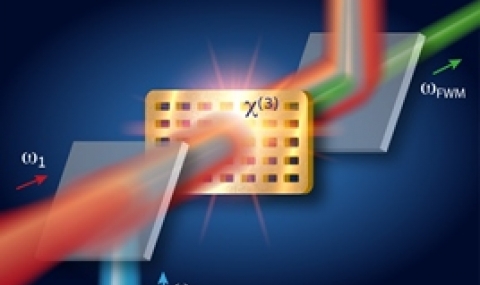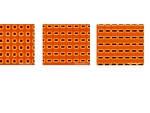Phase-control over nonlinear interactions in plasmonic nanostructures
Metasurfaces, and in particular those containing plasmonic-based metallic elements,
constitute an attractive set of materials with a potential for replacing standard bulky optical elements. In recent years, increasing attention has been focused on their nonlinear optical properties, particularly in the context of second and third harmonic generation and beam steering by phase gratings. In our lab, we harness the full phase-control enabled
by subwavelength plasmonic elements to demonstrate a unique metasurface-phase-matching which is required for efficient nonlinear processes. We discuss the difference between scattering by a grating and by subwavelength phase-gradient elements. We show that for such interfaces a new, anomalous phase matching condition prevails, which is the nonlinear analog of the generalized Snell’s law. The subwavelength phase control of optical nonlinearities paves the way for the design of ultrathin, flat nonlinear optical elements. We demonstrate nonlinear metasurface lenses which act both as generators and as manipulators of the frequency-converted signal.






